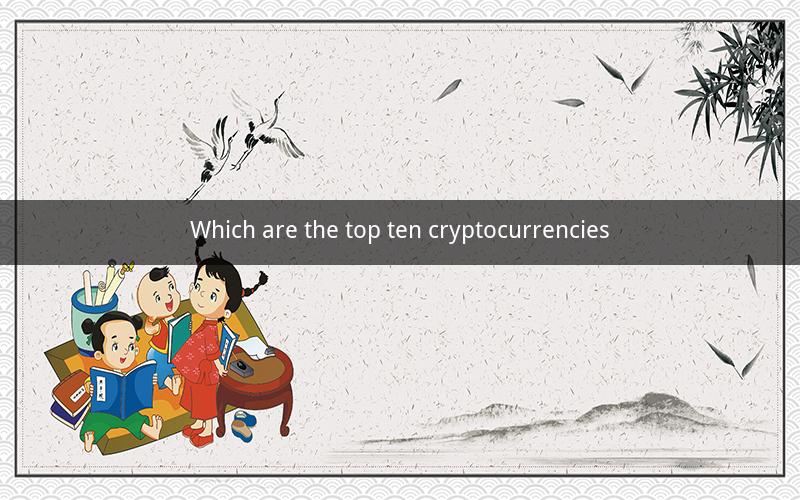
Cryptocurrency Landscape: The Top Ten Cryptocurrencies
Table of Contents
1. Introduction to Cryptocurrencies
2. Bitcoin: The Pioneering Cryptocurrency
3. Ethereum: The Platform for Smart Contracts
4. Ripple: Speed and Efficiency in Cross-Border Transactions
5. Bitcoin Cash: A Faster and Scalable Alternative
6. Litecoin: The Silver to Bitcoin's Gold
7. Cardano: Building a Sustainable Blockchain
8. Binance Coin: The Power of Binance's Ecosystem
9. Chainlink: Bridging Real-World Applications
10. Polkadot: Interoperability for Blockchain Ecosystems
11. Conclusion
1. Introduction to Cryptocurrencies
Cryptocurrencies have revolutionized the financial world by offering a decentralized and digital alternative to traditional banking systems. These digital assets are based on blockchain technology, which provides a secure and transparent ledger of transactions.
2. Bitcoin: The Pioneering Cryptocurrency
Bitcoin, launched in 2009, is the first and most well-known cryptocurrency. It operates on a decentralized network, allowing users to send and receive funds without the need for intermediaries. Bitcoin has a finite supply of 21 million coins, making it a deflationary asset.
3. Ethereum: The Platform for Smart Contracts
Ethereum, introduced in 2015, is a blockchain platform that enables the creation of decentralized applications (DApps) and smart contracts. It allows developers to build complex applications on top of its blockchain, offering greater flexibility and scalability than Bitcoin.
4. Ripple: Speed and Efficiency in Cross-Border Transactions
Ripple's primary goal is to facilitate fast and affordable international money transfers. The RippleNet platform uses its native cryptocurrency, XRP, to reduce the time and cost associated with cross-border transactions.
5. Bitcoin Cash: A Faster and Scalable Alternative
Bitcoin Cash (BCH) was created in 2017 as a hard fork of Bitcoin. It aims to address some of the scalability issues of Bitcoin by increasing the block size, allowing for faster transaction confirmations and lower fees.
6. Litecoin: The Silver to Bitcoin's Gold
Litecoin, launched in 2011, is often referred to as the "silver" to Bitcoin's "gold." It offers a faster block generation time and has a larger supply cap compared to Bitcoin. Litecoin is also more energy-efficient than Bitcoin.
7. Cardano: Building a Sustainable Blockchain
Cardano is a blockchain platform that focuses on sustainability and scalability. It uses a unique proof-of-stake algorithm called Ouroboros, which aims to be more energy-efficient than traditional proof-of-work systems. Cardano also boasts a robust research and development team.
8. Binance Coin: The Power of Binance's Ecosystem
Binance Coin (BNB) is the native cryptocurrency of the Binance exchange. It serves multiple purposes, including paying for transaction fees on the Binance Smart Chain, acting as a utility token within the Binance ecosystem, and being used for governance purposes.
9. Chainlink: Bridging Real-World Applications
Chainlink is a decentralized oracle network that connects smart contracts on the blockchain to real-world data. It enables developers to create more reliable and secure applications by providing real-time data from various sources.
10. Polkadot: Interoperability for Blockchain Ecosystems
Polkadot is a multi-chain system that aims to connect different blockchains into a unified network. It facilitates interoperability, allowing different blockchains to work together and share resources.
11. Conclusion
The top ten cryptocurrencies represent a diverse range of applications and technologies. Each has its unique features and goals, contributing to the dynamic and rapidly evolving cryptocurrency landscape.
---
Related Questions and Answers
1. Q: What is the difference between Bitcoin and Ethereum?
A: Bitcoin is primarily a digital currency, while Ethereum is a blockchain platform that supports smart contracts and decentralized applications.
2. Q: Can Ripple be used for everyday transactions?
A: Ripple is designed for institutional and cross-border transactions rather than everyday use. Its primary use case is to facilitate fast and affordable international money transfers.
3. Q: Why is Bitcoin Cash considered more scalable than Bitcoin?
A: Bitcoin Cash increases the block size limit, allowing for more transactions to be processed per block, thereby reducing congestion and lowering transaction fees.
4. Q: What makes Litecoin different from Bitcoin?
A: Litecoin has a faster block generation time and a larger supply cap. It is also more energy-efficient than Bitcoin.
5. Q: What is the role of Cardano's Ouroboros algorithm?
A: Ouroboros is a proof-of-stake algorithm that makes Cardano's blockchain more energy-efficient compared to traditional proof-of-work systems.
6. Q: How does Binance Coin contribute to the Binance ecosystem?
A: Binance Coin is used to pay transaction fees on the Binance Smart Chain, act as a utility token within the Binance ecosystem, and participate in governance decisions.
7. Q: What is Chainlink's primary function?
A: Chainlink is a decentralized oracle network that connects smart contracts to real-world data, enabling developers to create more reliable and secure applications.
8. Q: Why is Polkadot focused on interoperability?
A: Polkadot aims to connect different blockchains into a unified network, allowing them to share resources and collaborate, thus promoting a more efficient and diverse blockchain ecosystem.
9. Q: Can cryptocurrencies be considered a stable investment?
A: Cryptocurrencies can be volatile, and their value can fluctuate significantly. They should be considered as an investment with high risk and not a stable store of value.
10. Q: What are the potential risks of investing in cryptocurrencies?
A: Potential risks include market volatility, regulatory changes, security vulnerabilities, and the potential loss of investment due to hacks or theft.